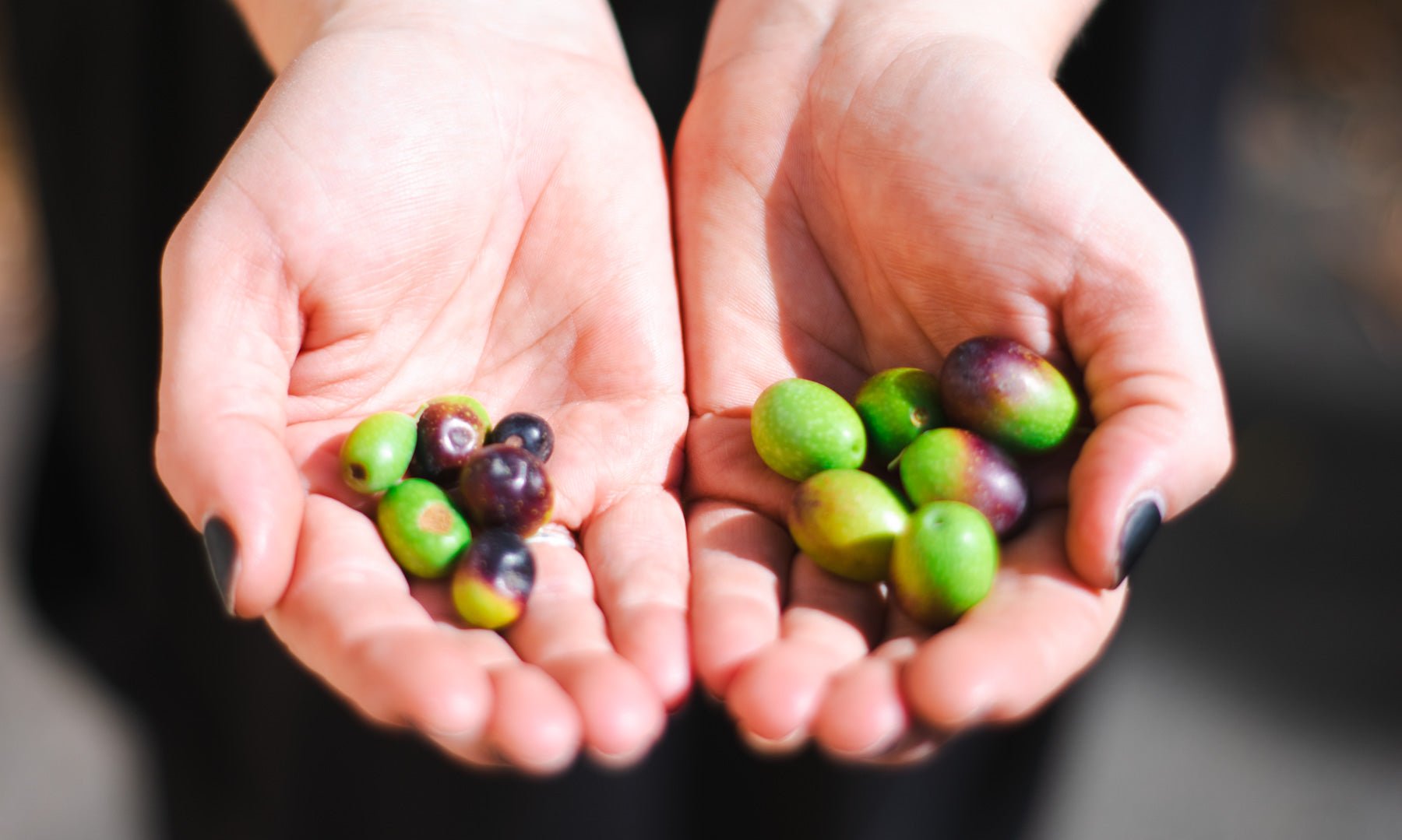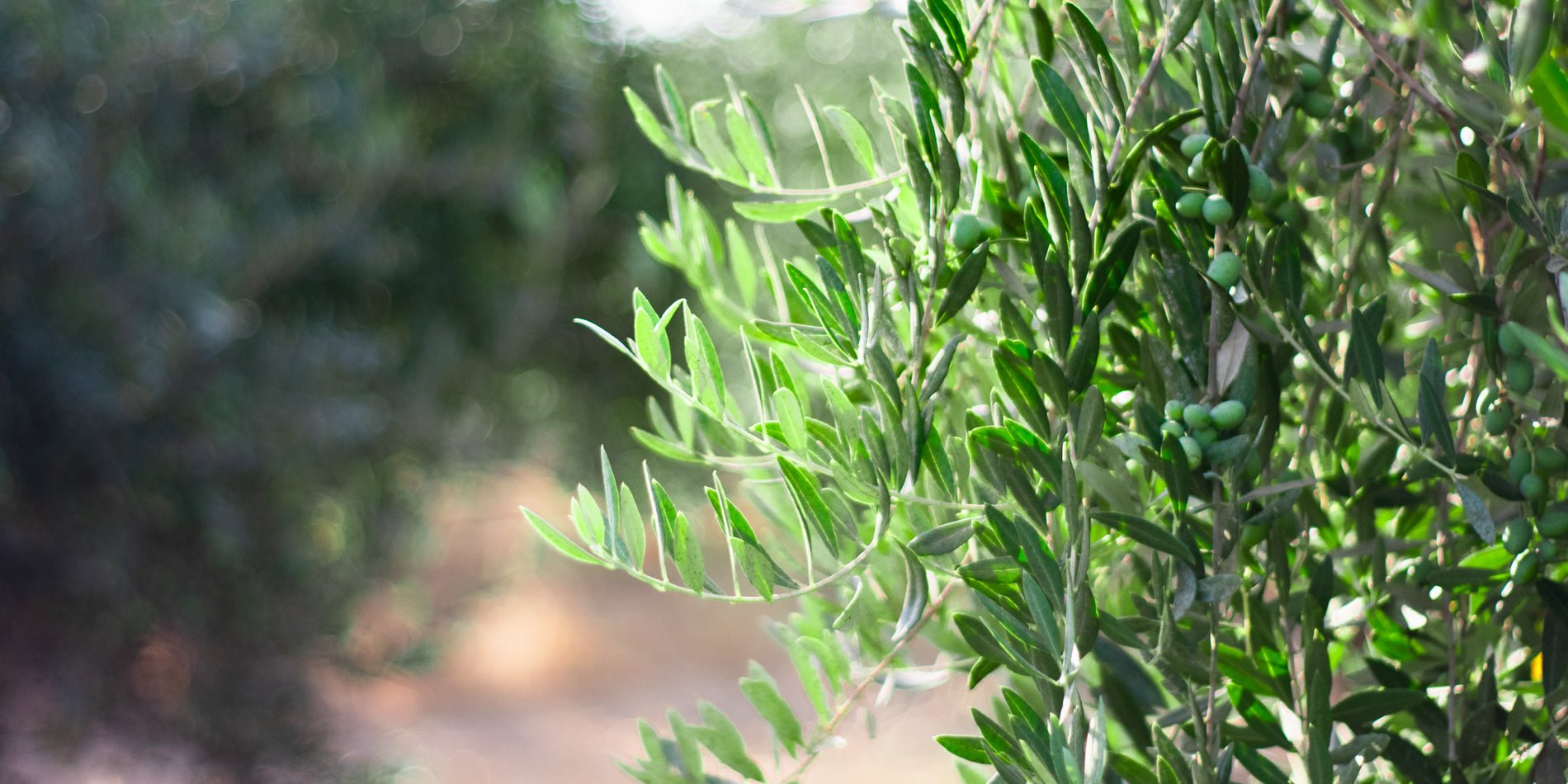Field Report: Regenerative Orchard Management & Organic Pest Control
Fly damaged fruit taken from nearby landscaping trees on the left, and healthy trees taken from our orchard on the right.
Regenerative Agriculture and Organic Pest Control
Over the past few years, we’ve been making strides in restoring soil health through regenerative agriculture practices. This journey has been rewarding, with one of the most exciting outcomes being how much stronger and more resilient our olive trees have become. By focusing on soil biology, nutrient balance, and fine-tuning our irrigation, we’ve seen improvements not only the health of our trees but also in the quality of our olives and olive oil.
One of the persistent pests of olive crops across the world is the olive fly. These innocuous looking insects can ravage a crop when they lay their eggs in the flesh of the olive. As the larvae develop, their digestion causes a type of rancidity in the fruit before emerging. Fruit that has had fly damage will show a noticeable mark on the fruit and the oil will present with a distinctive type of rancid flavor.
There are a number of options for olive fly control. We have used an organic fly spray derived from a unique bacterium called Saccharopolyspora spinosa mixed with a sugary bait. This option, although quite gentle on the environment, has proven very effective for control for us. However, there are reports that this spray is becoming less effective in some areas as the fly develops a resistance to it. While there are some other organic approaches to olive fly control, many growers are starting to turn to more intense insecticides. We have chosen to pursue a secret third option - none.
WHAT?! Olive growers around the world would think of us as radicals for considering abandoning targeted control methods, but we believe that we are on a path to an orchard where the trees are no longer of interest to the olive fly at all, and we are doing this by focusing on the metabolic health of our trees.

Building Stronger Trees Through Metabolic Health
When we talk about "metabolic health" in our trees, we mean supporting them with the right nutrients and growing conditions so they can thrive on their own. We like to think of the soil microbiome as similar to our own gut microbiome—crucial for the ability to properly absorb nutrients and central to the health of all other systems. Healthier trees can more efficiently convert nutrients into complex forms, like amino acids and proteins, rather than relying on simpler nutrients like nitrates and ammonium. This natural ability to "upgrade" nutrients strengthens the tree's immune system, fortifies its cell walls, and ultimately supports a healthier ecosystem from the ground up.
A tree that operates at peak metabolic health not only grows stronger, but it also helps the soil ecosystem thrive. The carbohydrates and other compounds produced through efficient photosynthesis flow into the soil, nourishing microbial life and helping to sequester carbon. This creates a positive cycle: healthy trees improve the soil, and improved soil makes healthier trees. Our trees, once vulnerable to common stresses, are now becoming more resilient and better equipped to face challenges from pests to climate change.
Nitrogen Management: A Key to Pest Resistance
One of the most compelling benefits of improving metabolic health is that it changes the way our trees interact with pests like the olive fly. This pest lays its eggs in olive fruit, where larvae develop and feed. But here's the twist: these young olive flies thrive on simpler nutrients, particularly ammonia and nitrates. When a tree has strong metabolic health and can better “digest” the nutrients it takes up from the soil, it doesn’t hold on to these nutrients in free form. Instead, it readily converts these into more complex forms like amino acids and proteins, which the olive fly can’t readily digest.
This approach led us to a small experiment. Normally, we apply a targeted, organic treatment (GF 120) to manage olive fly populations and our fruit is always virtually free of any damage due to our diligence. But this year, we set aside a test strip of four rows, skipping the spray to see if our improved metabolic health could do the work on its own. So far, the results are promising. While we’ve seen signs of the olive fly’s presence, we have found it difficult to find damaged fruit when we go looking, let alone enough to quantify. Our results suggest that our trees are defending themselves and the olive fly has simply decided to dine elsewhere.
What’s Next? Scaling Up the Experiment
These early results are exciting, and while they need further testing, we’re hopeful. If we can manage pests naturally through improved metabolic health, we could reduce our reliance on even the mildest treatments like GF 120 and avoid us ever having to consider more harmful control methods as the fly develops resistance to this spray. This would save time, money, and support a more sustainable, self-reliant orchard ecosystem.
As we continue down the path of regenerative agriculture, we’re eager to keep learning and experimenting. We look forward to a future where our trees' natural health and resilience lead the way in pest management. Here’s to more experiments, more lessons learned, and a grove that’s healthier and more sustainable with each season.






